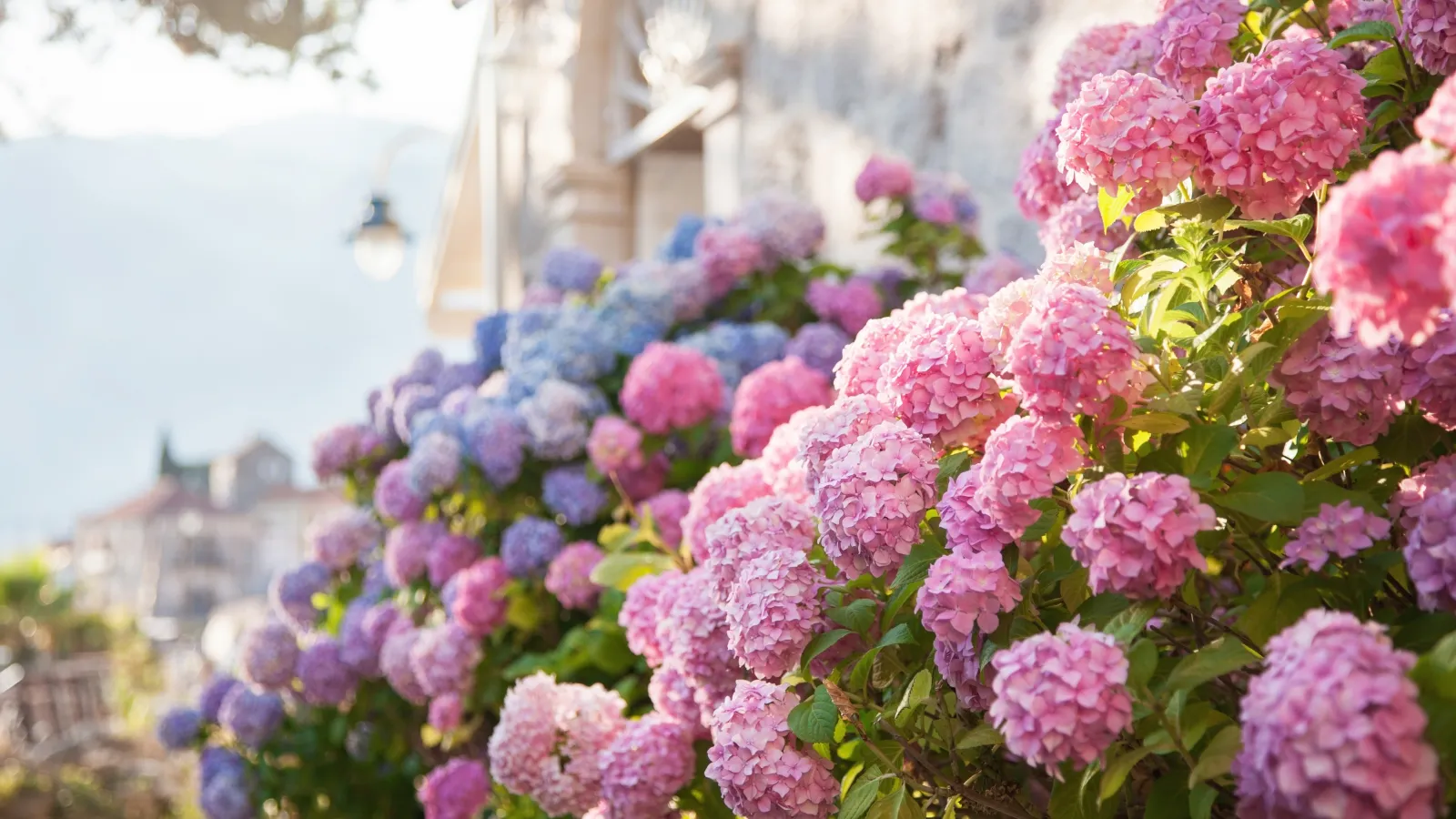
Hydrangeas
Hello, Hydrangeas!
Hydrangea shrubs are a quintessential part of southern gardens! They are fast growing, hardy plants with huge flower heads that will grace your garden from late spring to fall. With so many types and colors, there truly is a hydrangea shrub for everyone - and hydrangea lovers can fill their landscape with many varieties and never get bored!
Choosing a Hydrangea Shrub
Before choosing which hydrangea is right for your garden, you'll need to consider several things:
- Sunlight. Hydrangeas can take partial shade (sun in the morning, shade in the afternoon) or partial sun (sun in the afternoon) depending on the variety. Know your space and how much light it gets and at what time of day.
- Size. Measure the space you want to plant and be sure to choose a hydrangea variety that will fit. Depending on the variety, a hydrangea grows 4-15 feet tall and can grow equally as wide. So this is an important step!
- Bloom color. Flowers colors range from white, pink, lavender, purple, and blue. Some can change color depending on soil acidity, and some will start out as one color and change as the bloom matures.
Mophead Hydrangeas
- The most popular type of hydrangeas in the garden and are typically blue or pink but there are some varieties that are white
- Mophead hydrangeas (also known as macrophylla types) prefer shade to partial shade
- The 'Endless Summer' series of hydrangea shrubs are the most popular mophead hydrangeas with globe shaped blooms

Lacecap Hydrangeas
- Lacecap hydrangea types are similar to mophead hydrangeas
- Instead of round flower clusters, these types produce flower heads that look like flat caps with frilly edges
- Endless Summer 'Twist-n-Shout' and Let's Dance 'Starlight' are two popular varieties
- Plant in partial sun

Arborescens Hydrangeas
- Aborescens hydrangeas, also called smooth hydrangeas, prefer partial sun
- They have very large, heavy flowers so it's best to support the plant with a cage or plant by a decorative fence
- The most common Aborescens is 'Annabelle' that has large white flowers

Paniculata Hydrangeas
- Paniculata hydrangeas prefer partial sun to full sun
- Flower heads are cone shaped instead of ball-shaped and bloom later in the season
- 'Limelight' & 'Little Lime' hydrangeas have bright chartreuse blooms in midsummer and turn to pink in late fall
- 'Vanilla Strawberry' & 'Strawberry Sundae' are great hydrangeas with huge blooms that start as a creamy white, transition to pink and end as a strawberry red color
Oakleaf Hydrangeas
- This group of hydrangeas has a different shaped leaf that looks very similar to the leaves on an oak tree
- These types are native to the Southeast
- Oakleaf hydrangeas prefer partial shade
- Oakleaf hydrangeas have more cylinder shaped blooms and they are typically white

VIDEO: Growing Hydrangeas
Changing the color of your hydrangea blooms in the Southeast
(Different areas of the country may differ depending on native soils.)
- Some hydrangeas change color based on the acidity of the soil, while others are not affected by soil pH:
- Acidic Soil (pH below 6) turns hydrangeas blue
- Alkaline Soil (pH above 7) turns hydrangeas pink
- Neutral Soil (pH between 6 and 7) produces blooms that are blue and pink and often even purple
How to change the color of your hydrangea
- To make the soil more acidic for blue flowers, add garden sulfur beneath the plant and above the soil (about a half a cup) before the plant begins to bloom
- To make the soil more alkaline for pink flowers, add ground lime beneath the plant and above the soil (about a half a cup) before the plant begins to bloom
- Changing the color can take time and you may need to apply the lime or sulfur multiple times. In Georgia, it is easier to change the bloom from pink to blue because of our soil.
DIY Shade Garden Project
This partial shade project features a blue mophead hydrangea of any variety.
DIY Summer Garden Project
This partial sun garden project features a 'Limelight' paniculata (panicle) hydrangea.


